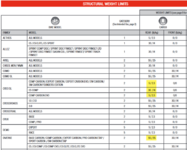Rollegourmet
New Member
- Region
- USA
Hello,
I m riding a Vado sl,5 days a week, 100 miles a week to commute to work.
On the week end, I m riding 30 miles per day.
I m a beginner.
Now, I would like to get to 60 miles per day on the week end and I m wondering if riding a creo SL will make a difference or it won t really matter?
The creo SL is more set up as a road bike so I wonder.
Thank you.
I m riding a Vado sl,5 days a week, 100 miles a week to commute to work.
On the week end, I m riding 30 miles per day.
I m a beginner.
Now, I would like to get to 60 miles per day on the week end and I m wondering if riding a creo SL will make a difference or it won t really matter?
The creo SL is more set up as a road bike so I wonder.
Thank you.
Last edited:



